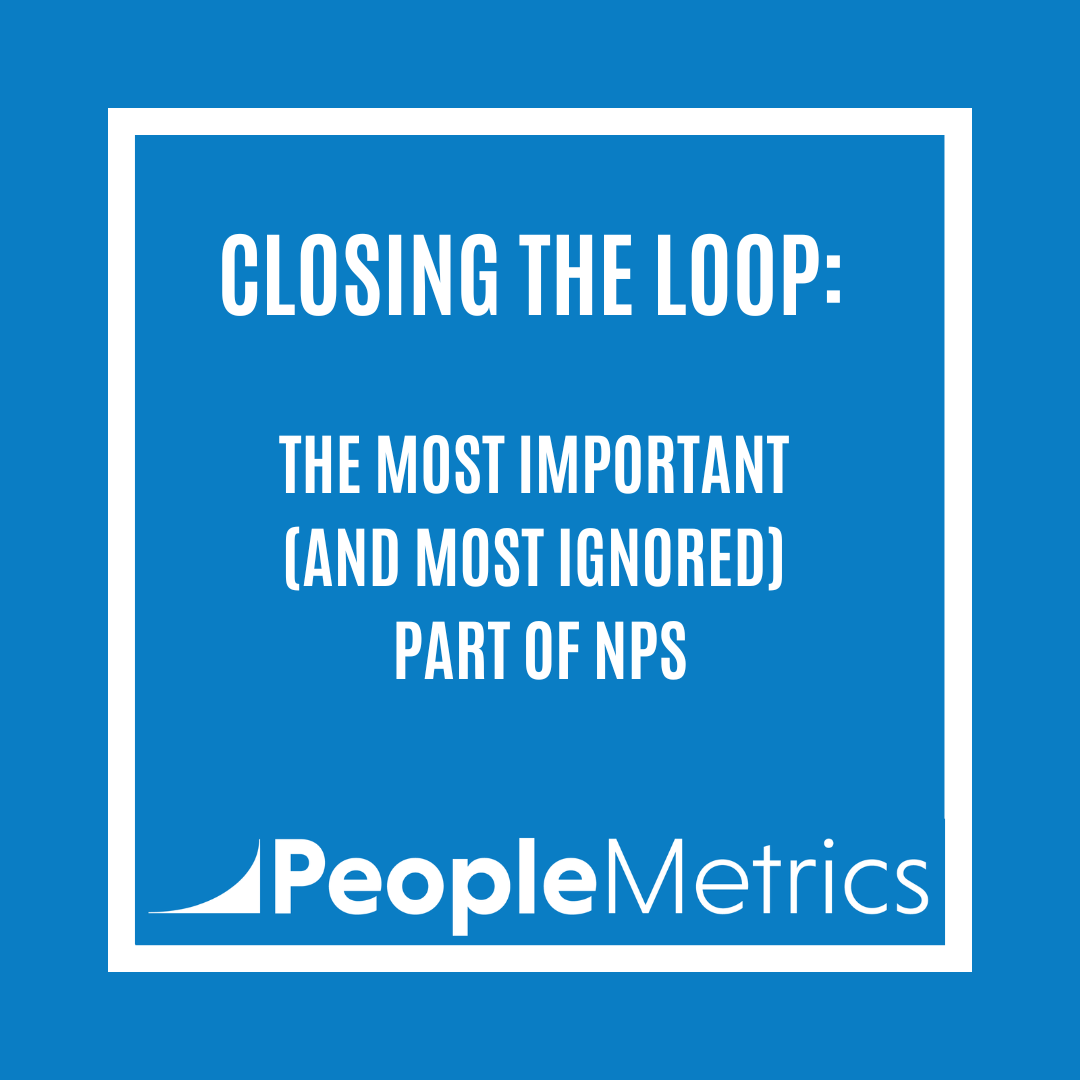You’ve asked your customers the right questions. You know your score. You understand the “why.” You’re sharing what you learn with your teams.
You have now gone from foundational to mature.
So, what’s next?
How do you move into the “elite” category of NPS programs?
If you want your NPS program to actually drive loyalty (not just measure it) you have to close the loop.
It sounds simple. But it’s the piece most companies skip or do half-heartedly. And that’s exactly why so many NPS programs stall out.
What Closing the Loop Really Means
Closing the loop means showing your customers (in actions, not just words) that you heard them.
It means fixing what you can fix and making sure wins get repeated.
It’s not only about following up with unhappy customers. It’s also about recognizing and amplifying what’s working.
A good close-the-loop system has two parts:
- Fix the pain points when you disappoint a customer and then fix the root cause for next time.
- Celebrate the wins when customers praise an employee or experience, so that behavior gets repeated and shared.
Companies that do both earn trust. They don’t just measure loyalty, they build it.
Why It Works
Think about the last time you gave feedback to a company and it disappeared into a black hole.
Frustrating, right?
You’re much less likely to bother next time.
When you close the loop, you show customers they didn’t waste their time. That simple step alone can dramatically reduce churn. In fact, research shows that following up with unhappy customers can cut defection rates by half!
Equally important: celebrating the good. Recognizing employees who deliver great experiences boosts morale and keeps teams motivated to do it again and again.
Who Should You Follow Up With?
1. Detractors and Passives:- In B2B, your default should be to follow up with every Detractor. Some companies do this for Passives too, especially when those accounts are high-value.
- In B2C, you’ll often need to prioritize. Focus first on your highest-value customers, repeat buyers, or frequent touchpoints that could cause churn. For high-volume segments, fix the root cause and communicate improvements more broadly.
- You don’t “fix” anything but you do close the loop by thanking them and recognizing what went right internally.
- And when it makes sense, you take the next step and ask for referrals, reviews, or testimonials. (We’ll cover that in detail in the next blog post)
How to Actually Do It
Act Fast, While It Still Matters! Speed signals you care. Ideally, follow up within 24–48 hours. Waiting a week makes people feel ignored.
Example: A Telecommunications company made it a rule to call every Detractor within 48 hours. Just doing that reduced repeat complaints and increased customer trust because people knew someone was listening.
Empower the Right People to Fix It
If the person calling the customer can’t do anything but apologize, you’re wasting everyone’s time. The best companies give teams the tools and authority to fix issues on the spot (within reason).
Example: The same Telecommunications provider created a special “save team” that could instantly adjust bills for customers with billing problems. They didn’t send people to another department; they handled it then and there. Churn dropped, and frustrated callbacks dropped too.
Fix the Root Cause
The best close-the-loop systems don’t just patch things up for one customer. They fix the underlying issue so the next customer doesn’t have the same bad experience. We call that fixing the “systemic” issue here at PeopleMetrics.
When your open-ended comments and driver analysis show that “returns take too long” comes up every quarter, it’s time to redesign the process, not just apologize or offer refunds repeatedly.
Celebrate What’s Working
Closing the loop isn’t only about problems. When you see praise for an employee, location, or process, share it!
Small “recognition alerts” go a long way in building a culture that repeats what’s working.
Example: A national retailer sends an automatic “shout-out” to store managers whenever a customer praises an employee by name in an NPS comment. It’s simple but it reinforces what great looks like.
One Caution: Don’t Over-Promise
Be honest about what you can fix and what you can’t. Sometimes you can’t make the issue disappear but you can explain what you’ll do differently next time. People appreciate knowing you’re trying.
Quick Close-the-Loop Checklist
Before you call your program “good enough,” ask:
- Do we reach out to Detractors promptly (within 48 hours ideally)?
- Do we have a plan for Passives (especially in high-value accounts)?
- Do our teams have the authority to fix problems on the spot?
- Do we fix the bigger root cause not just the symptom?
- Do we share wins and recognize employees when we get praise?
Why This Separates the Best from the Rest
The best companies don’t just measure loyalty through NPS, they earn it. They take feedback, act on it, and show customers they’re listening.
Closing the loop is the bridge between a number and real trust.
Up Next
In our next post, we’ll talk about the flip side: what to do when you get a 9 or 10. How do you thank Promoters, keep them engaged and ask for referrals the right way?





